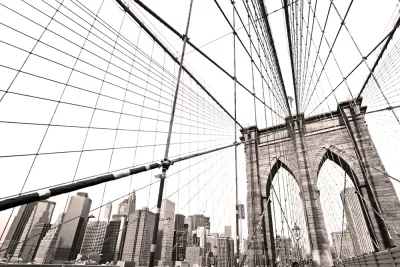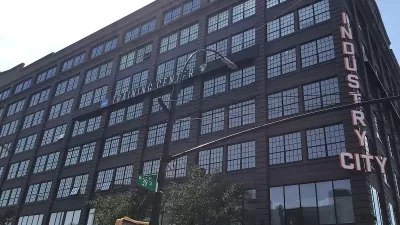On the media's responsibility for narratives that enable displacement, rather than inclusion.

Ben Adler writes a provocative piece about the tendency of the media to act like some neighborhoods didn't exist until they were gentrified:
"If you go to a gentrifying neighborhood and ask around, or just look at Census data, you will find that the neighborhood did in fact exist before it became trendy. Its population may have been lower; it certainly would have been poorer, and probably less white. But it was inhabited. And yet the media tells us otherwise, suggesting that until new residents showed up, these neighborhoods were 'a no man’s land,' still waiting to 'emerge.'"
Adler views these types of perspectives as a new version of American colonialism, with The New York Times providing the object of Adler's critique. Recent examples of the privileged perspective od colonialism includes takes on neighborhoods like Gowanus in Brooklyn and the South Bronx. Adler also finds an example in the Washington, D.C. local public radio station WAMU.
Instead of relying on easy, but false and, yes, offensive, tropes, Adler provides the following call to action:
"There is nothing wrong with news outlets reporting on these ongoing transformations, or with noting that affluent professionals weren’t looking for housing in these neighborhoods a few years ago. But heralding these population shifts as if they were filling a void — as if places lie fallow until a certain type of resident arrives — reflects exactly the sort of attitude that leads to displacement instead of integration."
FULL STORY: Hey, media: Those gentrifying neighborhoods had residents before the yuppies moved in

Alabama: Trump Terminates Settlements for Black Communities Harmed By Raw Sewage
Trump deemed the landmark civil rights agreement “illegal DEI and environmental justice policy.”

Planetizen Federal Action Tracker
A weekly monitor of how Trump’s orders and actions are impacting planners and planning in America.

The 120 Year Old Tiny Home Villages That Sheltered San Francisco’s Earthquake Refugees
More than a century ago, San Francisco mobilized to house thousands of residents displaced by the 1906 earthquake. Could their strategy offer a model for the present?

In Both Crashes and Crime, Public Transportation is Far Safer than Driving
Contrary to popular assumptions, public transportation has far lower crash and crime rates than automobile travel. For safer communities, improve and encourage transit travel.

Report: Zoning Reforms Should Complement Nashville’s Ambitious Transit Plan
Without reform, restrictive zoning codes will limit the impact of the city’s planned transit expansion and could exclude some of the residents who depend on transit the most.

Judge Orders Release of Frozen IRA, IIJA Funding
The decision is a victory for environmental groups who charged that freezing funds for critical infrastructure and disaster response programs caused “real and irreparable harm” to communities.
Urban Design for Planners 1: Software Tools
This six-course series explores essential urban design concepts using open source software and equips planners with the tools they need to participate fully in the urban design process.
Planning for Universal Design
Learn the tools for implementing Universal Design in planning regulations.
Clanton & Associates, Inc.
Jessamine County Fiscal Court
Institute for Housing and Urban Development Studies (IHS)
City of Grandview
Harvard GSD Executive Education
Toledo-Lucas County Plan Commissions
Salt Lake City
NYU Wagner Graduate School of Public Service




























